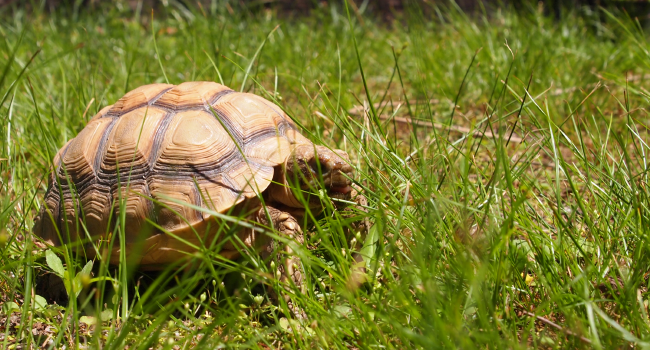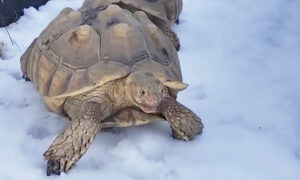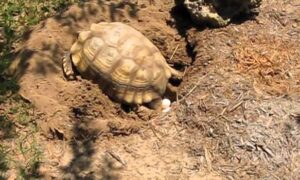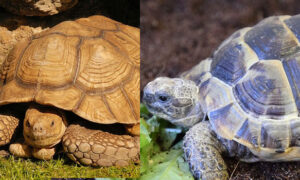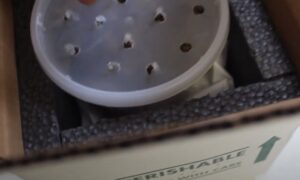It’s important that sulcata tortoises of all ages receive UVB rays, so you want to make sure you have a safe place for a baby sulcata to spend time outside. Whether you plan on leaving baby sulcata tortoise outside for one hour or all afternoon, it’s important to consider the details.
It can be too cold for a baby tortoise to be outside. It can also be too hot for a baby tortoise to be outside. Baby tortoises are more susceptible to illness.
How Much Time Should a Sulcata be Outside?
A baby sulcata does not have to spend ALL day outside to get optimal UVB. Essentially, a baby sulcata can spend one hour outside per one inch of length. So, a three-inch baby, should be outside about three hours.
You can leave a baby sulcata outside for longer, depending on the weather.
You do not want to leave a baby sulcata outside if the weather is super wet, hot or cold. Use common sense when leaving a baby tortoise outside.
You may find that one hour outside in hotter weather can cause a baby to overheat. When caring for a baby tortoise, it’s important to realize they have a lower tolerance.
When considering leaving a baby sulcata tortoise outside, make or buy an outdoor enclosure that will keep your sulcata safe and contained while outside.
Safe Enclosure for Baby Sulcata Tortoise Outside
Even if you plan on being outside with your tortoise, you will be surprised to see how fast they can move and how well they can hide. This is why it’s important to create a safe outdoor enclosure. When setting up an outdoor enclosure for a baby sulcata, consider safety.
- Set up a space that has a lid to prevent predators from taking your sulcata.
- Create a space with plenty of shade to prevent overheating.
- Set up a space where the baby sulcata has plenty of space to walk around.
- Set up a space where the sulcata cannot dig out.
- Provide a water bowl, hides and safe landscaping.
- Avoid areas that have been treated with pesticides or herbicides.
- Be careful of ant beds and other scavenger-type bugs.

